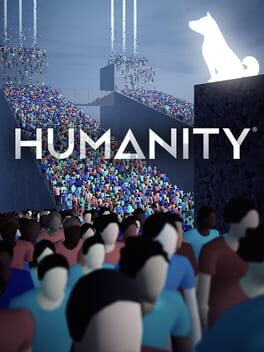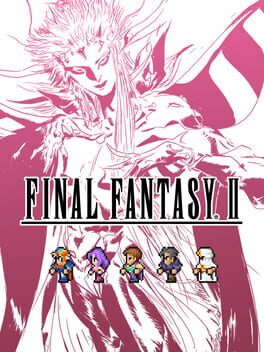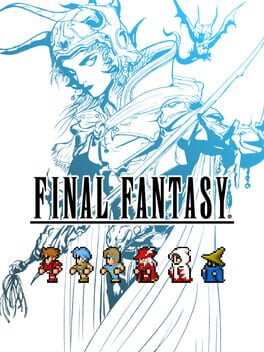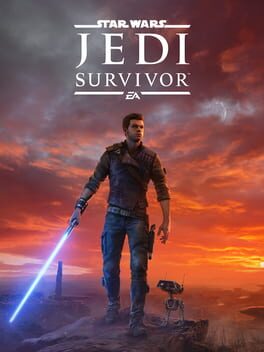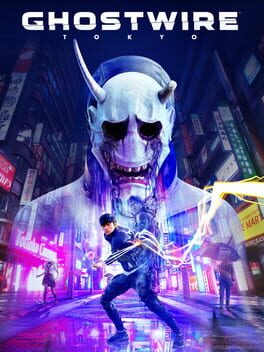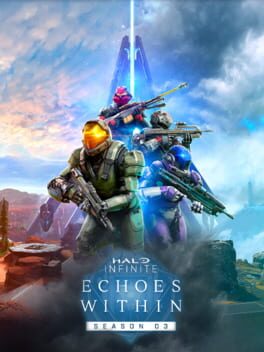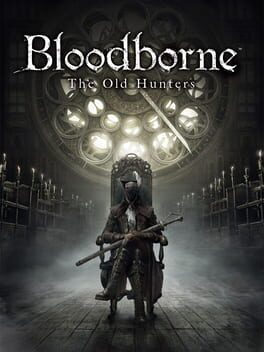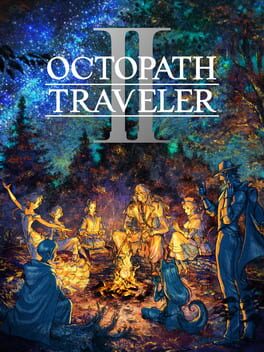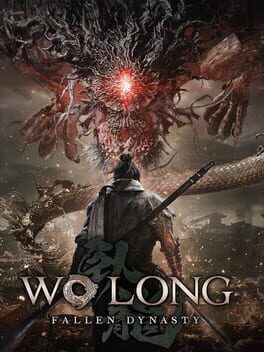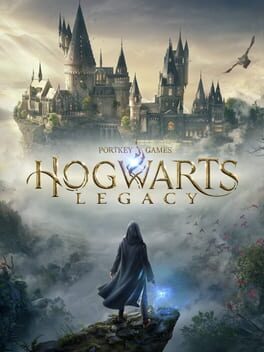ARW3
BACKER
2023
Humanity was an incredibly unique and interesting puzzle game. The narrative is captivating enough, with some philosophical propositions accompanying this dog's strange journey. Puzzle design is incredible and rewarding in the early goings. Over time, the puzzle appeal waned for me, personally. While the constant introduction of new, clever mechanics are a net positive, I found some of the endgame gimmicks to be a bit tedious or questionably responsive. The sui generis nature of both the music and art direction that I found quite endearing. All and all, an easy recommendation to anyone seeking a fun puzzler or rewarding brain workout
110 hours and 152 shrines later... I finally rolled credits on The Legend of Zelda: Tears of the Kingdom... and it was truly wonderful. The exploration and physics-driven gameplay driving this experience astounded me throughout. There is a certain magic to this game, and the pure joy it invokes, that I am not sure I can conjure into words. Tears of the Kingdom's open world sandbox will be spoken of in reverential tone for many years to come, I suspect. While its predecessor did not quite capture me, a more curated narrative allowed this game to sink its hooks into me much quicker. Within the first few hours you are introduced to the majority of the creative tools the game will give you, and over the next 50-100 hours you're invited to run absolutely wild with your imaginative incorporation of these tools into the gameplay loop. The high level of interactivity that exists between these tools and items or environments in the game world are unrivaled in this game genre. It is exceedingly rare to find a game so capable and competent in its endeavors to surprise and reward creativity. For this reason, in the context of a beautifully crafted open world beaming with personality, I feel the Zelda team has delivered yet another masterpiece.
2021
I hear from those better versed in the Final Fantasy franchise than I describe FFII as the "black sheep" of the franchise. Now having completed it, I understand where they are coming from, but overall enjoyed the experience. The leveling system, aka the elephant in the room, is indeed obtuse and poorly aged. However, it was in some ways a pioneering system that has bones we can see in modern RPGs' usage-based skill leveling systems. I do not think it would be too far-fetched to suggest that FFII laid down the groundwork for the skill leveling systems we see in the likes of The Elder Scrolls or in Starfield later this year.
While this first attempt at altering the tried and true means of leveling was middling in its reception, FFII distinguished itself from its predecessor in one other notable way. In my eyes, FFII represented a definitive step for the franchise in establishing self-identity. Here, unlike in FFI, there is a larger focus on establishing a character-driven story. It was a first-draft in telling a tale with gravity, featuring an ensemble of differing personalities, with a larger focus on world-building. This fundamental blueprint went on to shape future Final Fantasy stories.
Although surely not the best aging Final Fantasy game, I think FFII probably had more of an impact on future RPGs, including those in the same series, than it is often given credit for.
While this first attempt at altering the tried and true means of leveling was middling in its reception, FFII distinguished itself from its predecessor in one other notable way. In my eyes, FFII represented a definitive step for the franchise in establishing self-identity. Here, unlike in FFI, there is a larger focus on establishing a character-driven story. It was a first-draft in telling a tale with gravity, featuring an ensemble of differing personalities, with a larger focus on world-building. This fundamental blueprint went on to shape future Final Fantasy stories.
Although surely not the best aging Final Fantasy game, I think FFII probably had more of an impact on future RPGs, including those in the same series, than it is often given credit for.
2021
I quite enjoyed this game! This is the title that started it all for this franchise, and in spite of some aged mechanics, I can see why it is an absolute classic. Although I am visiting from years and years (less than 2000 mind you) after its original 1987 release date... I can see why it was so special for its time. The pixel-remaster refurbishing is admirable, and I think the game can be broached by folks who might not be well acquainted with RPGs should they choose to use the new boost features. This game might be light on deep narrative threads, but the whimsical world of the original Final Fantasy is certainly worth the venture. Although I am new to this beloved game, I am appreciative of its clear influence on many of my favorite games in both my formative years and in the modern day.
2022
Just... really good gaming. I don't have much to add to the already existing GoW: Ragnarök discussion. It is a perfect marriage of sublime, insistently fun combat with meaningful narrative direction. The experience is brought home with stunning depictions of interesting characters, the realization of fantastical world spaces, astound attention to detail and high polish. Although hampered by lulls in the narrative pacing and an annoying travel system brought forward from God of War (2018), Ragnarök is nothing short of a masterpiece.
Star Wars Jedi: Survivor will go down as one of the finest action-adventure games of recent memory and earns its spot as one of the best AAA Star Wars games. It is filled with heart, joy, sorrow and a resolute respect for the universe it takes place in. Cal Kestis is better fleshed out in this sequel, and the supporting cast are fantastic. As a sequel, Survivor improves upon its predecessor in almost every way. Exploration and level-design are elevated, with worlds that are truly stunning. The combat is refined, rewarding and well realized. The level of customization in this game is truly admirable, from cosmetics to accessibility. This game's greatest flaw, in my eyes, will likely be a transient one. As of the time of this writing, the game does have notable performance issues. On Koboh, the main hub world in which Survivor takes place, performance absolutely chugs in the open world… screen tearing and jarring fluctuations in frame rate hurt the experience but ultimately the game shines through in face of these issues. There is a certain level of swashbuckling adventure to this game, like one might expect from the Uncharted games. However this is accompanied by the Metroidvania-style roots established by Jedi: Fallen Order and a stellar combat system that outshines any prior attempt at depicting the Jedi power fantasy in the gaming medium. Jedi: Survivor is a special game that admirably carries on one of the best Star Wars stories in the past couple decades. Should Respawn pursue a "Star Wars: Jedi" trilogy, the third game will have gargantuan shoes to fill… and I will once again be there to greet it, day one.
The "Fear the Children" quest-line added to the main campaign of Ghostwire Tokyo is phenomenal. It might just be the best side quest chain in the game, and it also allowed Tango to flex some of their horror-genre roots. The photograph missions added are much more forgettable.
The Spider's Thread Roguelike mode is interesting from what bit I have played, but after 40+ hours with the main game, I need a break from Ghostwire. Perhaps I will return to Spider's Thread in the future.
The Spider's Thread Roguelike mode is interesting from what bit I have played, but after 40+ hours with the main game, I need a break from Ghostwire. Perhaps I will return to Spider's Thread in the future.
2022
Ghostwire Tokyo is a good open world jaunt that has memorable atmosphere, stylish combat, and pays great homage to Japanese folklore. Perhaps the biggest flaw of Ghostwire Tokyo is that there is simply "too much" of it. Tokyo's emptiness is haunting and serves the tone of the game, but the copy-pasted open world activities within it reach a point of being laborious, non-contributory bloat. The combat, which is overall very enjoyable, also suffers from "too much" - encounters are dragged out by bullet sponging enemies (especially DLC ones) and long animations. Still, many of the side quests are actually quite interesting. The story too is enjoyable enough, and the overall package is easy to recommend. The Spiders-Thread Update adds an excellent side quest chain in the game (starting with "Fear the Children"). This quest chain was amongst my favorites that Ghostwire offered me, and served as a reminder that although Ghostwire is not a horror game... Tango still can do horror well. The second side quest added is a forgettable collectathon type mission.
Ghostwire Tokyo does not evolve the Ubisoft-style open world formula, however it is a worthy adventure for fans of the genre. The experience is elevated by an intriguing realization of Japanese folklore, a unique premise, and flashy hand-weaving combat.
Ghostwire Tokyo does not evolve the Ubisoft-style open world formula, however it is a worthy adventure for fans of the genre. The experience is elevated by an intriguing realization of Japanese folklore, a unique premise, and flashy hand-weaving combat.
Halo Infinite continues to make great strides in its multiplayer offerings. Further implementation of Forge has added much needed variety to matchmaking, and the new maps and mode variations are of good quality. The addition of new sandbox items (the bandit rifle and the shroud screen) are welcomed, if not particularly impactful. Season 3 of Infinite finally delivers on the promise of what the game should have always been achieving as a live service product: featuring appropriately timed playlist updates, a good cycling of content, weekly store refreshes, and a steady cadence of free events. Custom game browsing and sharing of custom games have also injected newfound life into Halo Infinite.
However, Season 3 misses the mark in terms of its technical impacts on the game. I have experienced more bugs and technical difficulties in Season 3 than I have at any point since the game's initial launch. Old obnoxious bugs persist, such as the player's AI being reset to BUTLR. However, other more problematic bugs have become more prominent. The most egregious offense, for me, is the frequent, random resetting of controller settings. Multiplayer cinematics play nearly every time one launches the game, and Series X consoles have had a harder time hitting 120 fps consistently since the new season launched.
Overall, Season 3 provides good content and represents a positive direction for the game's Live Service. However, 343i still needs to keep it clean going forward - bugs that greatly diminish QoL must be quashed early, and old promises still need to be delivered on… there has been no mention from 343i on the promised Cross-Core customization, players still await a career progression system, and notable game modes like "Griffball," "Assault," and "Infection" remain absent.
However, Season 3 misses the mark in terms of its technical impacts on the game. I have experienced more bugs and technical difficulties in Season 3 than I have at any point since the game's initial launch. Old obnoxious bugs persist, such as the player's AI being reset to BUTLR. However, other more problematic bugs have become more prominent. The most egregious offense, for me, is the frequent, random resetting of controller settings. Multiplayer cinematics play nearly every time one launches the game, and Series X consoles have had a harder time hitting 120 fps consistently since the new season launched.
Overall, Season 3 provides good content and represents a positive direction for the game's Live Service. However, 343i still needs to keep it clean going forward - bugs that greatly diminish QoL must be quashed early, and old promises still need to be delivered on… there has been no mention from 343i on the promised Cross-Core customization, players still await a career progression system, and notable game modes like "Griffball," "Assault," and "Infection" remain absent.
The Old Hunters is an essential piece of DLC for an already outstanding game. The lore and world-building embedded within this expansive yet non-gratuitous experience is deeply additive to the disturbing propositions of the base game. The boss encounters are top class, representing some of the very best produced for Bloodborne as a whole. The environments are eerie in a way that is intuitively in-line with the base experience, but unique in their own right. Overall, The Old Hunters content represents a top-class expansion that should be experienced by anyone who already finds themselves captivated by Bloodborne's lore or combat.
2015
Performance woes, chalice dungeon grinds and rude mob encounter design aside, it is hard to critique such a masterfully crafted game. Bloodborne's deeply disturbing Victorian atmosphere represents a crowning achievement in world building. FromSoftware's RPG elements shine here and lend themselves to a highly player tailored experience that allows for meaningful builds and proper self-expression. Bloodborne's unique combat, forgoing any traditional "blocking" option, shines thanks to the thoughtful tools provided to players and FromSoftware's impeccable attention to mechanics. As is standard with FS games, the boss encounters are spectacular highlights throughout this experience. It too was engrossing to slowly piece together how each demented looking beast, creature, or disfigured person ties into the game's overall lore. Few games reach such heights in both combat and world design, making Bloodborne a quintessential experience for those up for its challenge.
2023
Octopath Traveler II is a wonderful RPG with stunning art direction, a phenomenal ensemble of characters, engaging turn-based combat, fun bosses, a flawless OST, and an overall interesting world to traverse. The 8 travelers stories all come together in a surprising, but satisfying concluding arc that made for a meaningful ending to an overall phenomenal experience. Their stories were varied, but were mostly of excellent quality. Castti, Osvald, and Throné were highlight characters for me personally. "Travel banter" between the characters was appropriately endearing, and by the end it is easy to become invested in the relationships of the cast members as well as their individual personalities. The world of Solistia is unapologetically gorgeous: HD-2D has made a triumphant return in Octopath II, and I can only hope to see it further employed in the future, hopefully with equally intriguing writing accompanying it. The pixel art on display here, including a gargantuan effort to create the game's day/night cycle, is amongst the best you will witness in any video game. The only thing in Octopath Traveler II more stunning than the art direction is the music: it is simply, sublime. Without a shadow of a doubt, this game's OST is one of the best I have ever heard in any video game. It ranges from uplifting to haunting, graceful to chaotic, and I would wager is nearly perfect. For fans of traditional, ensemble-driven turn-based RPGs, Octopath Traveler II is an indubitably easy recommendation.
Overall, Wo-Long is a pretty good game. It shines during its chaotic combat sequences, bolstered by flashy animations and bombastic boss battles. Boss encounters, character customization, and the "spirit" system all serve as notable strengths for this title. Graphics and level design are sadly quite outdated, yet still yield strangely long loading screens. The game runs fairly well on Xbox Series X, and I personally experienced little technical hurdles and no crashes. Although the minute-to-minute combat is fantastic, it becomes hard to enjoy it with enemy encounters that prioritize cheesy hidden placements of enemies and overall bland enemy variety to unleash your growing skills upon. As one masters the game's parry system, the difficulty becomes manageable and quite rewarding, but it is hard to not grow frustrated as you traverse redundantly designed levels (i.e. draining a moat to enter a monotone tunnel 3+ times in one mission) in hopes of reaching the next exciting boss fight. The morale system, while neat it in concept, is also hindered by the frustrating enemy layouts. Working diligently to raise your morale can easily become instantly negated by some foot-soldier hiding behind a corner, ready to instant hit you with a critical strike just because you so dared as to explore the world. This nerfs you going into the next encounter, and in a way would sometimes discourage me from engaging with the combat system at every chance… despite it being the game's strongest facet. The spirit system, in contrast, is well realized. Balancing overall offense, defense, wizardry, martial arts, and parries while considering your fluctuating spirit bar is a core means by which the combat stays splendidly exciting. This dance shines during boss fights. These boss encounters proved to be a consistent highlight throughout the entirety of the campaign. Although the deflect system is critical to nearly every one of these fights, there are enough differences in visual design and attack patterns for these fights to all prove wonderfully distinct. Fans of fast-paced, challenging combat will most likely enjoy their time with Wo-Long: Fallen Dynasty. For a completionist, this journey's runtime (excluding NG+, and only considering achievements/trophies) will likely fall in the 40-60 hour range for most people.
7.5 / 10
7.5 / 10
2023
Hogwarts Legacy is a good game that might just be an amazing game for big Harry Potter fans. PortKey's greatest accomplishment here was how expertly they brought Hogwarts Castle and the surrounding grounds to life. The castle and its surrounds are indeed wonderful and captivating to traverse. There is intrigue at every corner, with interesting lore and conversations to be uncovered. What's more, it is graphically stunning at times, especially around the castle. It is impressive just how much of this world is rendered at any given time, even with some minor loading circles appearing on occasion and pop-in throughout the open world.
The game is whimsical and fantastical in a way that serves it well. The open world design does leave some aspects to be desired, filled with tiresome side quests and a meaninglessly bloated number of collectible tasks (the Merlin Trials being the biggest culprit). Poor dialogue from a majority of the many characters you meet also can be a bummer, but a handful of the main cast (i.e. Poppy Sweeting and Sebastian) are more interesting. The most frustrating aspect of the game, aside from a notable trophy bug preventing me from completing the conjuration collection, is repetitive dialogue. Never again do I want to hear anything from the Foo Flame lady, or any Hogsmeade talk from the protagonist. These flaws are partly remedied by a serviceable story, intriguing companion quests, and a surprising strength: the combat. There is quite a lot of fun that can be had with the combat in Hogwarts Legacy, with a nice spread of spells and combinations at one's disposal. Enemy variety is narrow for such an expansive game, but combat scenarios nonetheless were highlights throughout. Accompanying systems are also strong: broom-riding, beast management, herbology and potion making all can play a significant role in one's playthrough. The game does well to serve multiple play-styles through these systems and accompanying combat skill trees.
Hogwarts Legacy acts as a mesmerizing love letter to the franchise, albeit with a notable, conceited effort in some areas to distinguish itself from the deleterious views' of the IP's creator. All and all, Hogwarts Legacy delivered on the long overdue promise of realizing the Wizarding World into a AAA video game.
The game is whimsical and fantastical in a way that serves it well. The open world design does leave some aspects to be desired, filled with tiresome side quests and a meaninglessly bloated number of collectible tasks (the Merlin Trials being the biggest culprit). Poor dialogue from a majority of the many characters you meet also can be a bummer, but a handful of the main cast (i.e. Poppy Sweeting and Sebastian) are more interesting. The most frustrating aspect of the game, aside from a notable trophy bug preventing me from completing the conjuration collection, is repetitive dialogue. Never again do I want to hear anything from the Foo Flame lady, or any Hogsmeade talk from the protagonist. These flaws are partly remedied by a serviceable story, intriguing companion quests, and a surprising strength: the combat. There is quite a lot of fun that can be had with the combat in Hogwarts Legacy, with a nice spread of spells and combinations at one's disposal. Enemy variety is narrow for such an expansive game, but combat scenarios nonetheless were highlights throughout. Accompanying systems are also strong: broom-riding, beast management, herbology and potion making all can play a significant role in one's playthrough. The game does well to serve multiple play-styles through these systems and accompanying combat skill trees.
Hogwarts Legacy acts as a mesmerizing love letter to the franchise, albeit with a notable, conceited effort in some areas to distinguish itself from the deleterious views' of the IP's creator. All and all, Hogwarts Legacy delivered on the long overdue promise of realizing the Wizarding World into a AAA video game.
2023
This game is brilliant on many levels. Everything pulsates to its beat: enemy attacks, the player's idle animations, environmental objects, obstacles, parries or actions in a cutscene… the combat, while demanding a steep learning curve, can feel absolutely sublime when you become in-sync with the world around you… and what a world it is. The cel-shaded art style of Hi-Fi Rush is simply gorgeous and teeming with untamed creativity. For a linear game, the environments are dense and often mesmerizing. The game will show-off the sheer polish in its animation work by cleverly playing with perspective or seamlessly transitioning in and out of 3D action to a beautiful comic-like cutscene… all without missing a beat. The combat too strives to the march of the beat, but does well to not overly punish you when you stray from perfect rhythm. Instead, the combat concerns itself more with positive reinforcement. Subtle tones and musical queues will accompany extra powerful attacks when melee strikes are executed on beat. Hi-Fi Rush constantly layers its mechanics as the game progresses and new enemy types join the battlefield. What starts as a simple rhythm combat game rapidly ramps up to a chaotic concert of Devil May Cry inspired action combat with combinations galore, partner attacks, grapple-hooking, dodges, parries, and more. This game encourages mastery of its complex combat systems, offering players a huge array of endgame content and mission replayability options after credits have rolled on this fairly tight, well-paced experience. There are upgrades to find, novel challenge encounters to play, easter eggs to uncover, high-scores to achieve and a staggering list of challenges to pursue in the post-game. The easter eggs are particularly charming, with references galore. The content of these nods include ranging inspiration from their own Evil Within games, other titles like Yakuza or Persona 5, and even Katy Perry's Super Bowl performance... the outside allusions always put a smile on my face. Of-course, this all works from a practical perspective thanks in-no-small-part to how refreshingly polished this title is at launch. My 18 hours of the game were flawless in terms of performance and stability.
Combat finds a way to remain satisfying and fresh throughout, as the game demands more finesse and coordinated use of the tools it has provided players. Scattered throughout the campaign, as a breakup from normal combat, are lavish boss fights. Often, they are a visual spectacle with masterclass animation-work. No two bosses fight the same, and each features its own musical track (often licensed) to elevate the experience. The music choices here absolutely slap. Hi-Fi Rush makes excellent use of some licensed music, featuring the likes of Nine Inch Nails, The Black Keys, and The Joy Formidable (the lattermost contributes a song overlying my favorite level, or "track," of the game). That being said, the OST for this game is similarly excellent, and I'd argue the "Streamer Mode" is on parity with the default music mode. The Glass Pyramids' contributions are absolute fire - "The Beacon" and "Synesthesia" were favorites tracks of mine. Chai, 808 and the rest of his accomplices are an absolutely lovable, goofy set of characters. Robbie Daymond, Erica Lindbeck, Roger Craig Smith and the rest of the voice artists are splendid throughout. For a game so irreverent and characterized by its witty, silly and pun-laden banter… the voice artists and writers work in tandem to deliver on some strong emotional beats when the set is right for it. The narrative does not strive for over-complexity, but instead focuses on an endearing character-driven adventure filled with more heart than you can imagine.
You can apply that last statement to Hi-Fi Rush as a whole… Kai, 808 and crew may have entered the limelight seemingly overnight, courtesy of this game's shadow-drop release, but I expect we will see them again and that they will be celebrated for years to come. Tango Gameworks outdid themselves here. This traditionally horror-focused studio just released one of the most vibrant and uplifting titles we've ever seen from a first-party AAA developer. This might be their first foray in the action-adventure or rhythm-based genre, but they've knocked it out of the park with Hi-Fi Rush. It is joyous, charismatic, and unequivocally fun. I hope that this week John Johanes and his team are celebrating like they just dropped a platinum hit on their debut album… I already eagerly look forward to seeing what they do next.
Combat finds a way to remain satisfying and fresh throughout, as the game demands more finesse and coordinated use of the tools it has provided players. Scattered throughout the campaign, as a breakup from normal combat, are lavish boss fights. Often, they are a visual spectacle with masterclass animation-work. No two bosses fight the same, and each features its own musical track (often licensed) to elevate the experience. The music choices here absolutely slap. Hi-Fi Rush makes excellent use of some licensed music, featuring the likes of Nine Inch Nails, The Black Keys, and The Joy Formidable (the lattermost contributes a song overlying my favorite level, or "track," of the game). That being said, the OST for this game is similarly excellent, and I'd argue the "Streamer Mode" is on parity with the default music mode. The Glass Pyramids' contributions are absolute fire - "The Beacon" and "Synesthesia" were favorites tracks of mine. Chai, 808 and the rest of his accomplices are an absolutely lovable, goofy set of characters. Robbie Daymond, Erica Lindbeck, Roger Craig Smith and the rest of the voice artists are splendid throughout. For a game so irreverent and characterized by its witty, silly and pun-laden banter… the voice artists and writers work in tandem to deliver on some strong emotional beats when the set is right for it. The narrative does not strive for over-complexity, but instead focuses on an endearing character-driven adventure filled with more heart than you can imagine.
You can apply that last statement to Hi-Fi Rush as a whole… Kai, 808 and crew may have entered the limelight seemingly overnight, courtesy of this game's shadow-drop release, but I expect we will see them again and that they will be celebrated for years to come. Tango Gameworks outdid themselves here. This traditionally horror-focused studio just released one of the most vibrant and uplifting titles we've ever seen from a first-party AAA developer. This might be their first foray in the action-adventure or rhythm-based genre, but they've knocked it out of the park with Hi-Fi Rush. It is joyous, charismatic, and unequivocally fun. I hope that this week John Johanes and his team are celebrating like they just dropped a platinum hit on their debut album… I already eagerly look forward to seeing what they do next.
